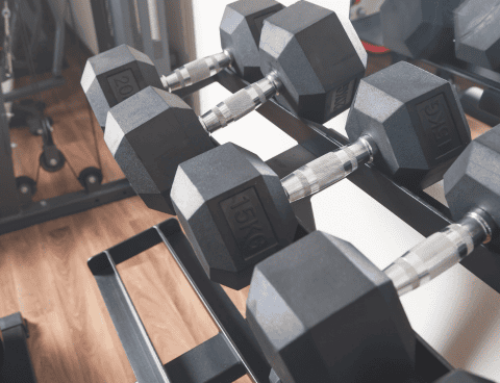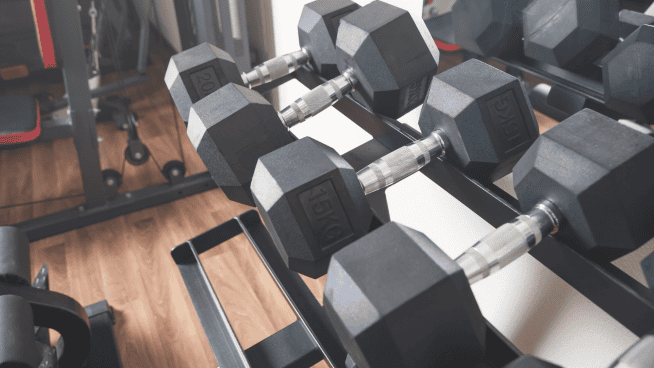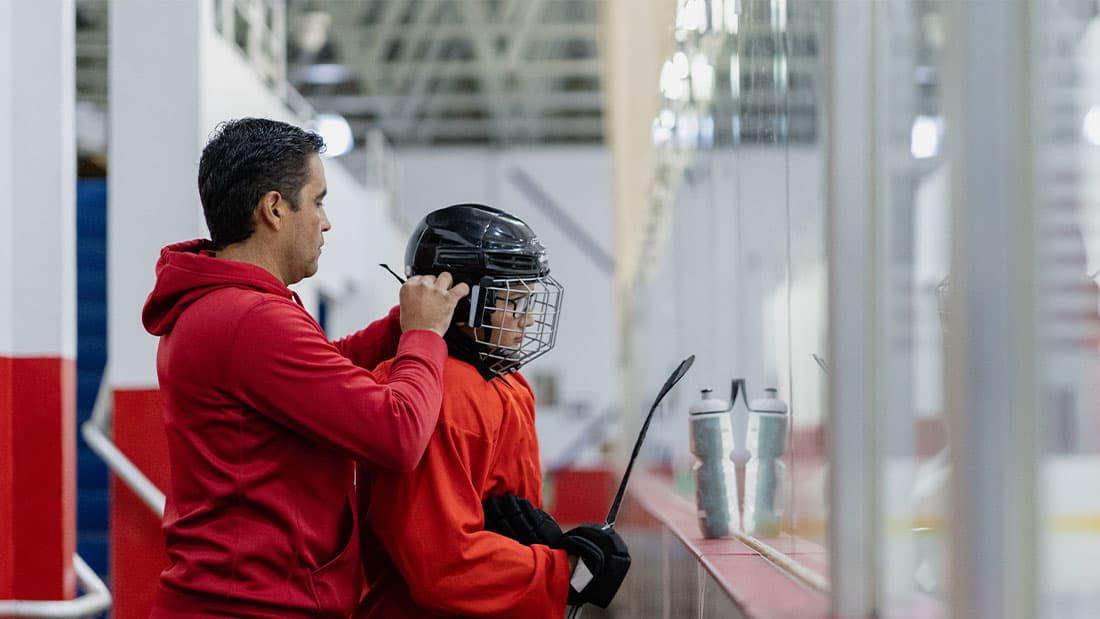How to Do a Plank Without Wasting Your Time
The world record for the longest Plank is five hours and 15 seconds, held by George Hood. If you’re an athlete, don’t try to break this record. Doing a five-hour Plank is physically and mentally taxing, but it does not maximize the benefits of the exercise. Usain Bolt may revere Hicham El Guerrouj, the world record holder in the mile (at 3:43.13), but what purpose would it serve for him if he tried to beat it as a sprinter?
Our goal is to train smarter, not harder. In my opinion, the Plank is one of the most misused exercises in the gym. This article will teach you how to perform the Plank properly.
What Does the Plank Train?
The Plank, or Prone Isolation Abdominal exercise, is designed to strengthen the core. Rather than creating movement, as in a Sit-Up, you simply hold the plank position, which trains the abdominals and several other core muscles. It is considered an anti-extension exercise, because the abdominals tighten to prevent the lower back from sagging down, or moving into extension.
This is actually the primary purpose of the abdominals—to resist movement, not create it. That’s why Planks have replaced old-school core exercises (like Crunches) as the preferred core exercise in the strength and conditioning community. They’re more effective at training the core, and they place less stress on the lumbar spine, making it a safer move.
However, holding a Plank beyond two minutes is simply a waste of time. If you can hit 120 seconds, you have sufficient endurance in your muscles. Think of long Planks this way. Do we ever attempt to strengthen our legs with an exercise we can hold for several minutes? Nope. We lift heavy weights! That’s why you need to do Planks properly to get the most out of the exercise—and to actually strengthen your core.
How To Do a Plank the Right Way
Step One: Master the Bird Dog
Most people go right into the Plank as a basic exercise. At Show Up Fitness, we begin on the floor on all fours in the Bird Dog. Your hands should be directly under your shoulders and your knees under your hips. Maintain a neutral head position, as if you were a dog holding a tennis ball under your chin. With an athlete in the Bird Dog position, I apply pressure to his or her shoulders and hips, so he or she is forced to engage and not be pushed around. This teaches the critical muscle activation needed to executive the Plank.
Step Two: Go Through Your Checkpoints
The most important set-up cues during a Plank are to engage the glutes, core and lats. Begin by squeezing your glutes. I tell our athletes to pretend there’s a magical $500 bill between their butt cheeks; don’t let anyone take it from you. Next, brace your stomach. Here’s how to brace: Imagine a ghost is randomly poking you in the stomach. You never know when to expect it, so you constantly keep a rigid core. Finally, pin your lats down to your sides. Picture eggs in your armpits; you want to crush them!
Step Three: Plank Violently
Now that we’ve reviewed the checkpoints and demonstrated what optimal engagement feels like, progress from the Bird Dog position into the Plank. The four points of contact are your hands and feet. I like to place a foam pad between the knees to help focus on adduction of the thighs. When you squeeze the pad, your entire lower half is optimally engaged. Drag your elbows toward your belly button and kick your toes into the ground. Think of it as if you were on your back trying to touch your fingertips to your toes. By doing this in the plank position, your whole body should be violently engaged—hence, the Violent Plank. By doing this optimally, you should only be able to hold for 10-20 seconds. Repeat for three to five sets before, during, and after your workouts.
Avoid These Common Plank Mistakes
Here are a few common mistakes.
- Sagging low back. If your body isn’t in a straight line, there’s a good chance your glutes are not properly engaged. When in doubt, squeeze those glutes!
- Elbows under the chest. There’s a tendency to migrate the elbows toward the belly button, which makes the plank easier. If you want to make the exercise more challenging, aim for your elbows at chin/eye level; that makes it 10 times harder.
- Neck position. After years of doing Push-Ups, many military people make the common mistake of looking up, positioning their head to look at the drill sergeant. Aim for a neutral position, which is pretending to hold a tennis ball under your chin; don’t let the ball drop!
Advanced Plank Variations
Want to take the Plank to the next level? Try these three variations.
- Side Plank or Star Fish. This one is great for shoulder stabilization, balance and activating the lateral core. To make it harder, lift your leg up to look like a Starfish.
- Reverse Plank. If you’ve got 60 or 70 degrees of extension (arm behind your body), without a forward glide of the humeral head, this Plank is a game changer. To make it harder, slowly march in place.
- Partner Planks. Want to challenge your brain along with your body? This Plank may be the best progression for athletes with a strong and stable core. Get into a push-up position and have a partner lift your legs. Without telling you, your partner drops a foot. Do not allow your toes to touch the ground. This is great for mind-body awareness and optimizing reactiveness.
RELATED:
RECOMMENDED FOR YOU
MOST POPULAR
How to Do a Plank Without Wasting Your Time
The world record for the longest Plank is five hours and 15 seconds, held by George Hood. If you’re an athlete, don’t try to break this record. Doing a five-hour Plank is physically and mentally taxing, but it does not maximize the benefits of the exercise. Usain Bolt may revere Hicham El Guerrouj, the world record holder in the mile (at 3:43.13), but what purpose would it serve for him if he tried to beat it as a sprinter?
Our goal is to train smarter, not harder. In my opinion, the Plank is one of the most misused exercises in the gym. This article will teach you how to perform the Plank properly.
What Does the Plank Train?
The Plank, or Prone Isolation Abdominal exercise, is designed to strengthen the core. Rather than creating movement, as in a Sit-Up, you simply hold the plank position, which trains the abdominals and several other core muscles. It is considered an anti-extension exercise, because the abdominals tighten to prevent the lower back from sagging down, or moving into extension.
This is actually the primary purpose of the abdominals—to resist movement, not create it. That’s why Planks have replaced old-school core exercises (like Crunches) as the preferred core exercise in the strength and conditioning community. They’re more effective at training the core, and they place less stress on the lumbar spine, making it a safer move.
However, holding a Plank beyond two minutes is simply a waste of time. If you can hit 120 seconds, you have sufficient endurance in your muscles. Think of long Planks this way. Do we ever attempt to strengthen our legs with an exercise we can hold for several minutes? Nope. We lift heavy weights! That’s why you need to do Planks properly to get the most out of the exercise—and to actually strengthen your core.
How To Do a Plank the Right Way
Step One: Master the Bird Dog
Most people go right into the Plank as a basic exercise. At Show Up Fitness, we begin on the floor on all fours in the Bird Dog. Your hands should be directly under your shoulders and your knees under your hips. Maintain a neutral head position, as if you were a dog holding a tennis ball under your chin. With an athlete in the Bird Dog position, I apply pressure to his or her shoulders and hips, so he or she is forced to engage and not be pushed around. This teaches the critical muscle activation needed to executive the Plank.
Step Two: Go Through Your Checkpoints
The most important set-up cues during a Plank are to engage the glutes, core and lats. Begin by squeezing your glutes. I tell our athletes to pretend there’s a magical $500 bill between their butt cheeks; don’t let anyone take it from you. Next, brace your stomach. Here’s how to brace: Imagine a ghost is randomly poking you in the stomach. You never know when to expect it, so you constantly keep a rigid core. Finally, pin your lats down to your sides. Picture eggs in your armpits; you want to crush them!
Step Three: Plank Violently
Now that we’ve reviewed the checkpoints and demonstrated what optimal engagement feels like, progress from the Bird Dog position into the Plank. The four points of contact are your hands and feet. I like to place a foam pad between the knees to help focus on adduction of the thighs. When you squeeze the pad, your entire lower half is optimally engaged. Drag your elbows toward your belly button and kick your toes into the ground. Think of it as if you were on your back trying to touch your fingertips to your toes. By doing this in the plank position, your whole body should be violently engaged—hence, the Violent Plank. By doing this optimally, you should only be able to hold for 10-20 seconds. Repeat for three to five sets before, during, and after your workouts.
Avoid These Common Plank Mistakes
Here are a few common mistakes.
- Sagging low back. If your body isn’t in a straight line, there’s a good chance your glutes are not properly engaged. When in doubt, squeeze those glutes!
- Elbows under the chest. There’s a tendency to migrate the elbows toward the belly button, which makes the plank easier. If you want to make the exercise more challenging, aim for your elbows at chin/eye level; that makes it 10 times harder.
- Neck position. After years of doing Push-Ups, many military people make the common mistake of looking up, positioning their head to look at the drill sergeant. Aim for a neutral position, which is pretending to hold a tennis ball under your chin; don’t let the ball drop!
Advanced Plank Variations
Want to take the Plank to the next level? Try these three variations.
- Side Plank or Star Fish. This one is great for shoulder stabilization, balance and activating the lateral core. To make it harder, lift your leg up to look like a Starfish.
- Reverse Plank. If you’ve got 60 or 70 degrees of extension (arm behind your body), without a forward glide of the humeral head, this Plank is a game changer. To make it harder, slowly march in place.
- Partner Planks. Want to challenge your brain along with your body? This Plank may be the best progression for athletes with a strong and stable core. Get into a push-up position and have a partner lift your legs. Without telling you, your partner drops a foot. Do not allow your toes to touch the ground. This is great for mind-body awareness and optimizing reactiveness.
RELATED:















